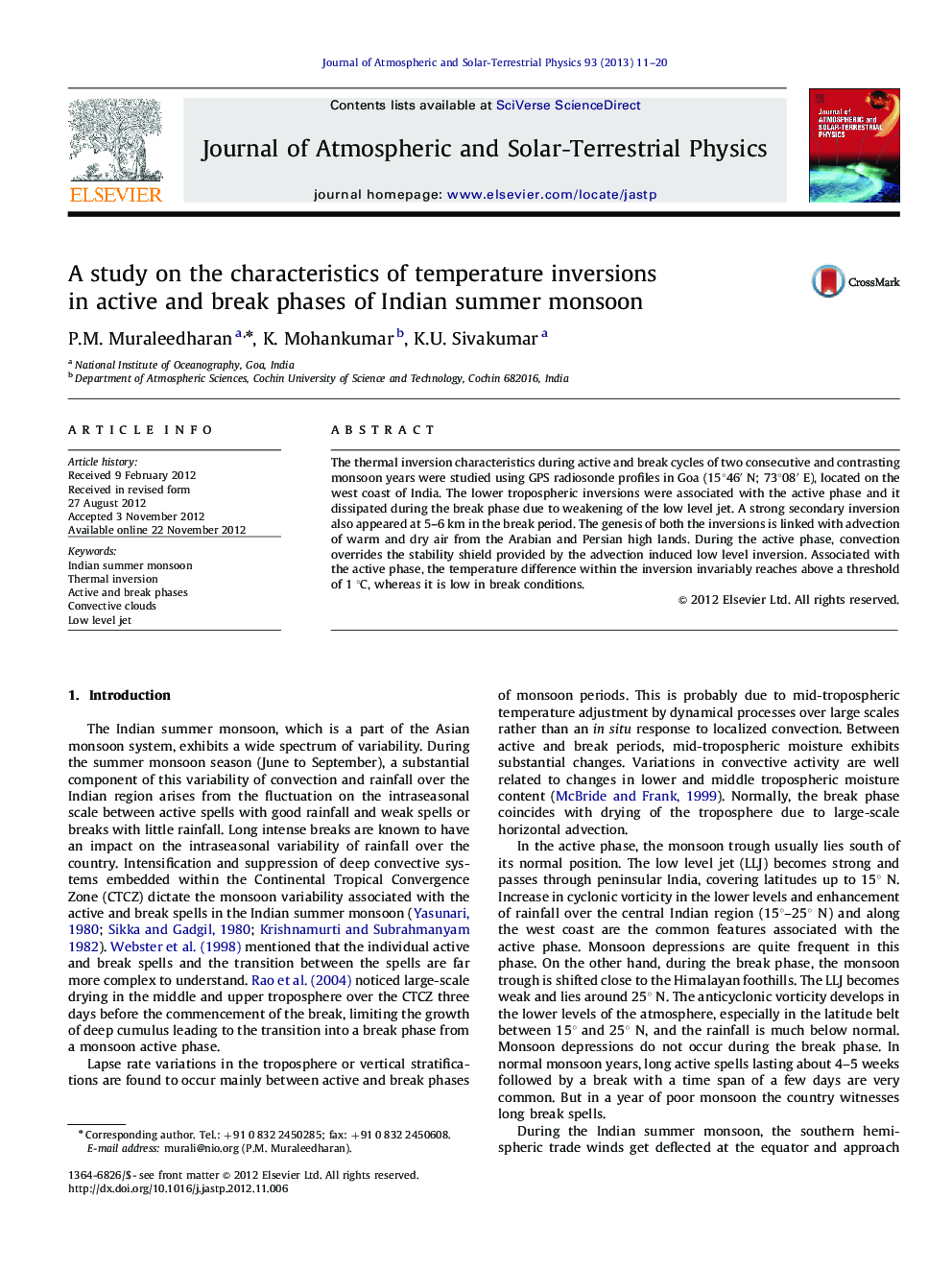| Article ID | Journal | Published Year | Pages | File Type |
|---|---|---|---|---|
| 1776745 | Journal of Atmospheric and Solar-Terrestrial Physics | 2013 | 10 Pages |
The thermal inversion characteristics during active and break cycles of two consecutive and contrasting monsoon years were studied using GPS radiosonde profiles in Goa (15°46′ N; 73°08′ E), located on the west coast of India. The lower tropospheric inversions were associated with the active phase and it dissipated during the break phase due to weakening of the low level jet. A strong secondary inversion also appeared at 5–6 km in the break period. The genesis of both the inversions is linked with advection of warm and dry air from the Arabian and Persian high lands. During the active phase, convection overrides the stability shield provided by the advection induced low level inversion. Associated with the active phase, the temperature difference within the inversion invariably reaches above a threshold of 1 °C, whereas it is low in break conditions.
► Lower tropospheric thermal inversions are associated with active monsoon. ► Strong secondary inversions appear at around 5–6 km during beak phase. ► Convection overrides the inversion induced stability shield during an active phase. ► The temperature difference in the lower inversion layer rises above the 1° C threshold. ► During break monsoon conditions the difference invariably falls below this threshold.
